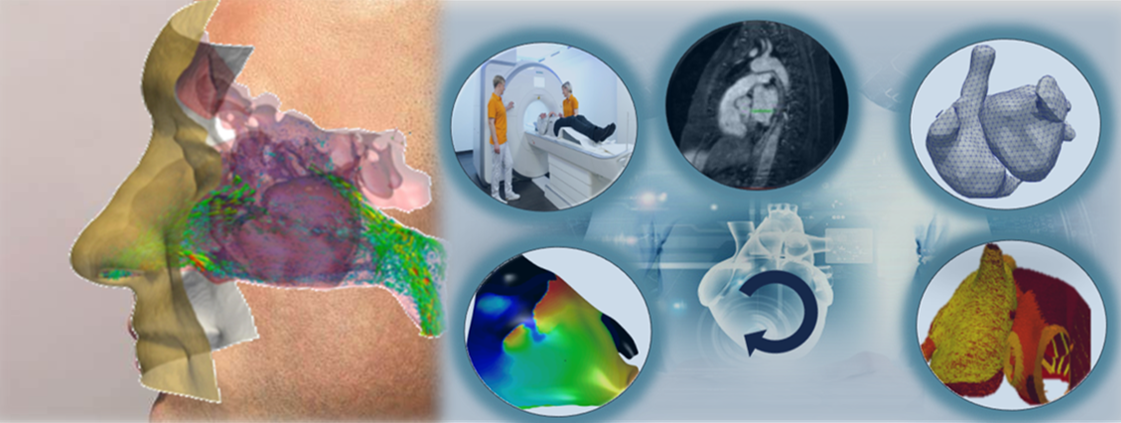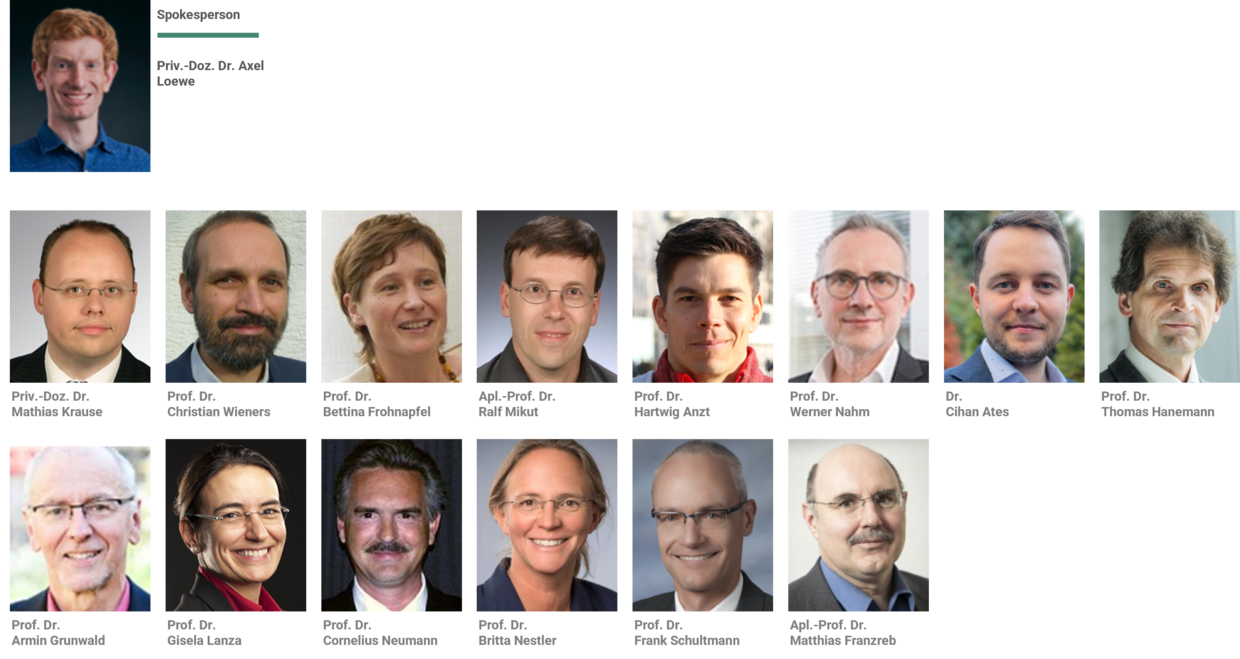The perfectly controlled environment of these engineering tools generates added value for example when used to build digital twins, which are personalized computational models of an individual person. Recent success stories include the systematic evaluation of different strategies to cure atrial fibrillation, which is the most common sustained cardiac arrhythmia as well as surgery planning in the airways and optimization of drug delivery devices.
Biomedical simulations make use of various hardware systems ranging from smartphones to supercomputers. In the health field, simulated data derived from high fidelity models are often essential enablers for machine learning approaches to overcome data scarcity, bias and privacy issues. Future efforts will be focused on continuously updating a patient‘s digital twin with incoming measurements to enable longitudinal studies and a closed feedback loop.
Projects
Simulation of fluid dynamics and image processing for various medical applications (especially respiratory and cardiology) using Lattice-Boltzmann methods (Krause, MVM).
Modeling and simulation for cardiology, Electrophysiology / cardiac arrhythmias / drugs and devices (Loewe, IBT / Wieners, IANM)
Mechanics of the heart and fluid dynamics (Loewe, IBT / Wieners, IANM / Frohnapfel, ISTM)
Mathematical methods and efficient solvers (Wieners, IANM / Anzt, SCC)
Machine learning for medical and biological time series, images and videos including deep learning (Mikut, IAI / Loewe, Nahm, IBT)
Mathematical image processing methods for image registration and reconstruction (Mikut, IAI / Nahm, IBT)
Signal processing for medical signals (Mikut, IAI / Loewe, IBT)


